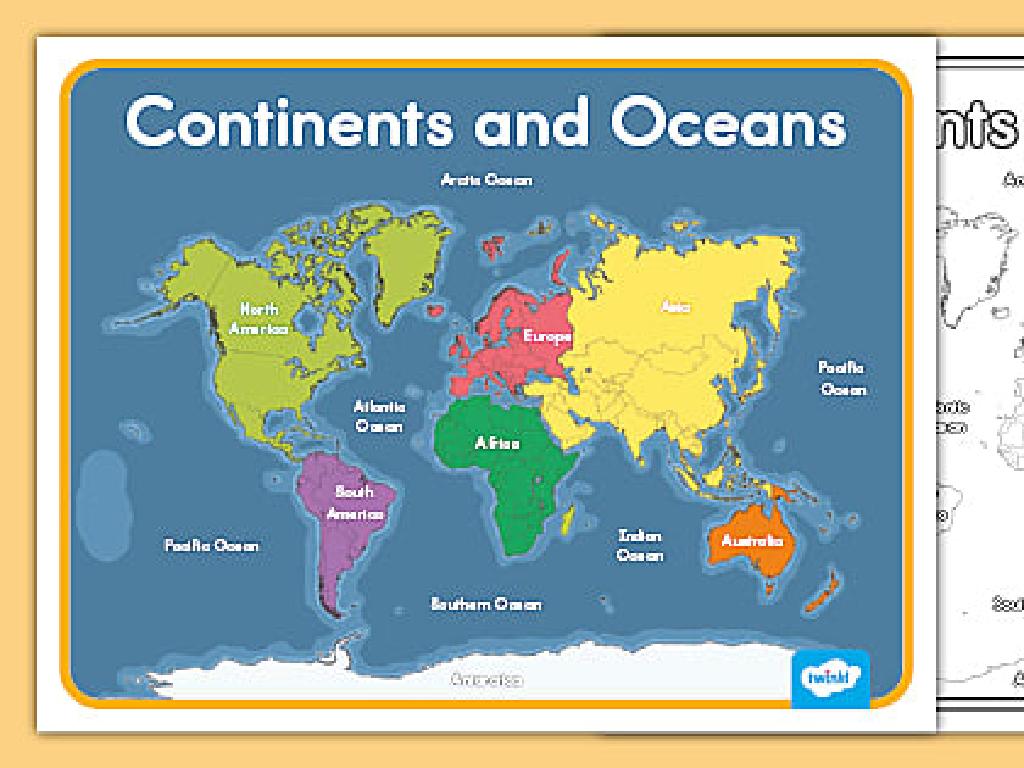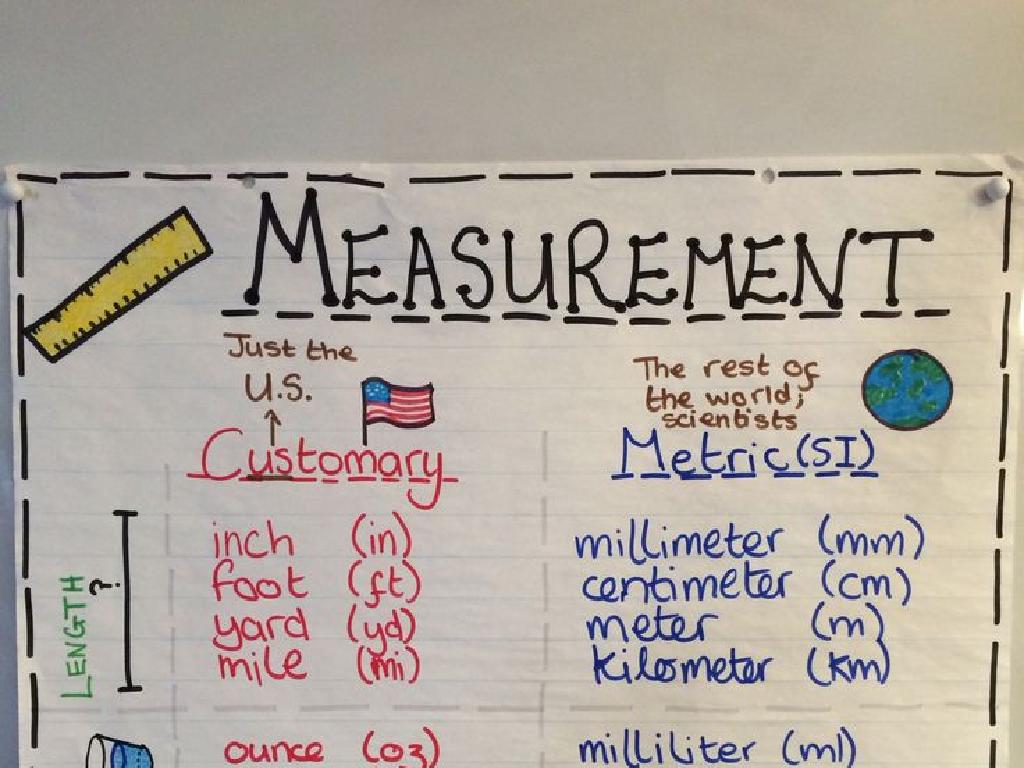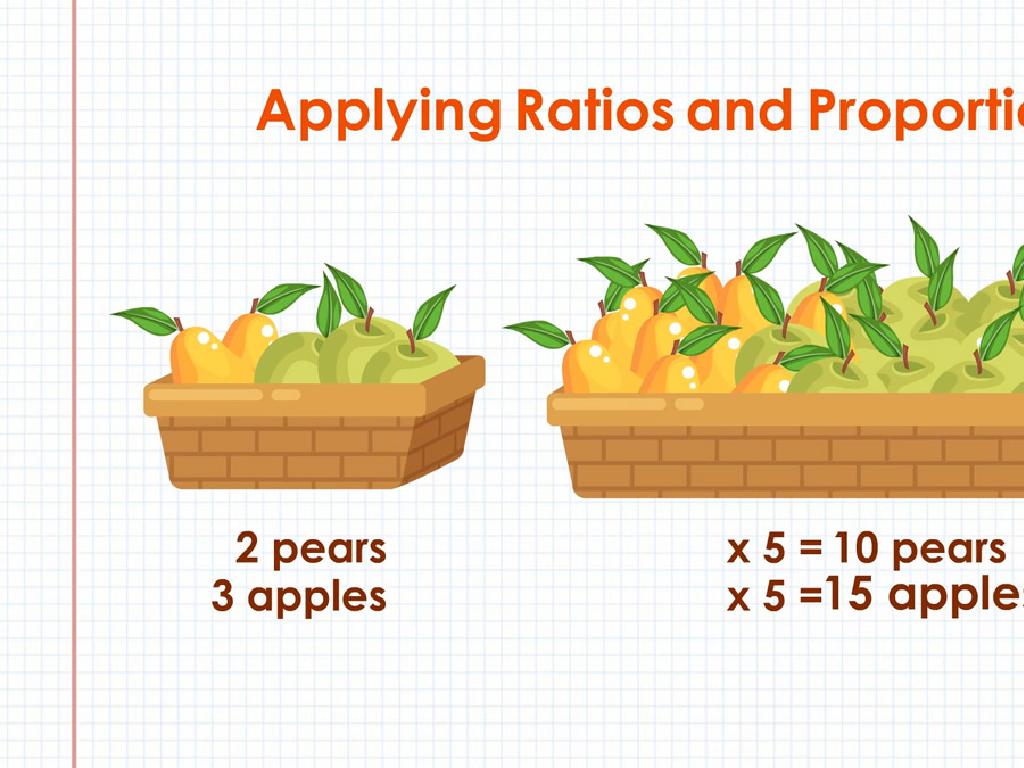Describe The Coordinate Plane
Subject: Math
Grade: Fifth grade
Topic: Coordinate Plane
Please LOG IN to download the presentation. Access is available to registered users only.
View More Content
Welcome to the Coordinate Plane!
– Discover the coordinate plane
– Key concept in mathematics
– It’s a 2D surface where we plot points, lines, and shapes.
– Learn to locate points
– Each point is defined by an (x, y) pair.
– Practice with coordinates
– We’ll use examples like a treasure map to find points.
|
Introduce the coordinate plane as a fundamental concept in mathematics, essential for graphing and understanding geometric relationships. Explain that it consists of two perpendicular lines, called axes, that intersect at the origin. Emphasize the importance of the (x, y) coordinate system in locating points on the plane. Use interactive examples, such as plotting points on a treasure map, to make the learning process engaging. By the end of the lesson, students should feel comfortable identifying and plotting points using their coordinates. Encourage questions and provide plenty of practice opportunities.
Exploring the Coordinate Plane
– Coordinate plane basics
– A flat surface with two crossing number lines
– Horizontal number line: x-axis
– The x-axis goes left to right
– Vertical number line: y-axis
– The y-axis goes up and down
– Intersecting lines create coordinates
– Where they cross is the origin (0,0)
|
Introduce the coordinate plane as the foundation of graphing in mathematics. Explain that it consists of two perpendicular number lines: the horizontal x-axis and the vertical y-axis. Emphasize that the point where they intersect is called the origin, with coordinates (0,0). Use a simple illustration on the board to show these elements. Encourage students to visualize the plane as a map that can locate points using two numbers, one from each axis. This concept is crucial for their understanding of graphing equations and geometric figures in future lessons.
Understanding Axes on the Coordinate Plane
– The x-axis and y-axis intersection
– The point where the two lines meet is called the origin.
– Origin: The starting point (0,0)
– The origin is always at (0,0), where counting starts.
– Axes divided into equal intervals
– Each axis has evenly spaced marks, like a ruler.
– Representing positive and negative numbers
– Numbers to the right/up are positive, left/down are negative.
|
This slide introduces students to the basic structure of the coordinate plane, focusing on the axes. The x-axis (horizontal) and y-axis (vertical) intersect at a point called the origin, which is the central reference point with coordinates (0,0). It’s crucial for students to understand that the axes are like number lines, divided into equal intervals, and they extend in both positive and negative directions. Positive numbers are found to the right of the origin on the x-axis and above the origin on the y-axis, while negative numbers are to the left and below the origin, respectively. Emphasize the symmetry of the coordinate plane and how it is used to locate points in space. Use visual aids to help students visualize the concept and provide examples of points with positive and negative coordinates.
Quadrants of the Coordinate Plane
– Coordinate plane divided into four
– Quadrants numbered I to IV
– Numbering starts at top right, goes counterclockwise
– Each quadrant has unique value signs
– Quadrant I: (+x, +y), II: (-x, +y), III: (-x, -y), IV: (+x, -y)
– Quadrants help locate points
|
This slide introduces students to the concept of quadrants on the coordinate plane. Emphasize that the coordinate plane is like a map divided into four sections, each with a specific numbering system and sign combination for x (horizontal) and y (vertical) values. Quadrant I is in the top right and has both x and y values positive. As we move counterclockwise, the signs of x and y values change. This system helps us to precisely locate where points are on the plane. Use examples like ‘treasure maps’ to make the concept relatable, and consider plotting simple points in each quadrant to demonstrate.
Plotting Points on the Coordinate Plane
– Start at the origin (0,0)
– Move to the x-coordinate
– Move right for positive, left for negative
– Shift to the y-coordinate
– Move up for positive, down for negative
– Mark the point with a dot
|
This slide is designed to teach students the step-by-step process of plotting points on a coordinate plane. Begin by explaining the origin as the starting point (0,0), where the x-axis and y-axis intersect. Emphasize that the x-coordinate determines how far to move horizontally, to the right for positive numbers and to the left for negative numbers. Then, explain that the y-coordinate tells us how far to move vertically, up for positive and down for negative. After moving according to the coordinates, students should place a dot to represent the point. Use examples to plot points as a class, and encourage students to practice with different coordinate pairs.
Let’s Practice Plotting Points!
– Class point plotting activity
– Teacher provides coordinates
– Students guide the plotting
– Move horizontally, then vertically
– Example: For (3, 2), move 3 steps right, then 2 steps up
|
This slide is designed for an interactive class activity to help students practice plotting points on a coordinate plane. The teacher will provide a set of coordinates, and the students will guide the teacher on where to plot them on the board. It’s crucial to emphasize the order of movements: start by moving horizontally along the x-axis, and then move vertically along the y-axis to reach the correct point. This exercise will reinforce their understanding of the coordinate plane and how to navigate it. Prepare a list of coordinates beforehand and consider having different difficulty levels to cater to all students. Possible activities include plotting points to form a picture or having students come up to the board to plot points themselves.
Coordinate Plane in Real Life
– Beyond the math classroom
– Mapping our world
– Geographers use coordinates to pinpoint locations on Earth.
– Video games and coordinates
– Game developers use them to create and navigate virtual worlds.
– Everyday uses of coordinate planes
– From architects to pilots, coordinates help in many professions.
|
This slide aims to show students that the coordinate plane is a tool used in various real-life applications, not just a concept for math class. It’s crucial for students to understand that learning about coordinate planes is not just an academic exercise but a skill that can be applied in many fields. Geography uses coordinate planes to locate places accurately on maps. In video games, coordinate planes help in designing levels and tracking movements, making the gaming experience possible. Additionally, many professions, such as architecture and aviation, rely on coordinate systems to perform their work effectively. Encourage students to think of other areas where they might encounter coordinate planes in their daily lives.
Coordinate Plane Treasure Hunt
– Receive a treasure map
– Treasures marked by coordinates
– X and Y coordinates lead to treasure
– Work in pairs to plot points
– Use your knowledge of the coordinate plane
– First to find all treasures wins
|
This class activity is designed to provide students with a fun and interactive way to apply their knowledge of the coordinate plane. Provide each pair with a map that has several ‘treasures’ marked by their coordinates. Students must use their understanding of the x (horizontal) and y (vertical) axes to plot the points correctly and find the treasures. The activity reinforces the concept of coordinate pairs and the use of the coordinate plane as a tool for locating points. To ensure engagement, offer a small prize for the first pair to correctly locate all the treasures. Possible variations of the activity could include obstacles that require solving math problems to bypass, or clues that lead to the next coordinate, adding layers of challenge and learning.






